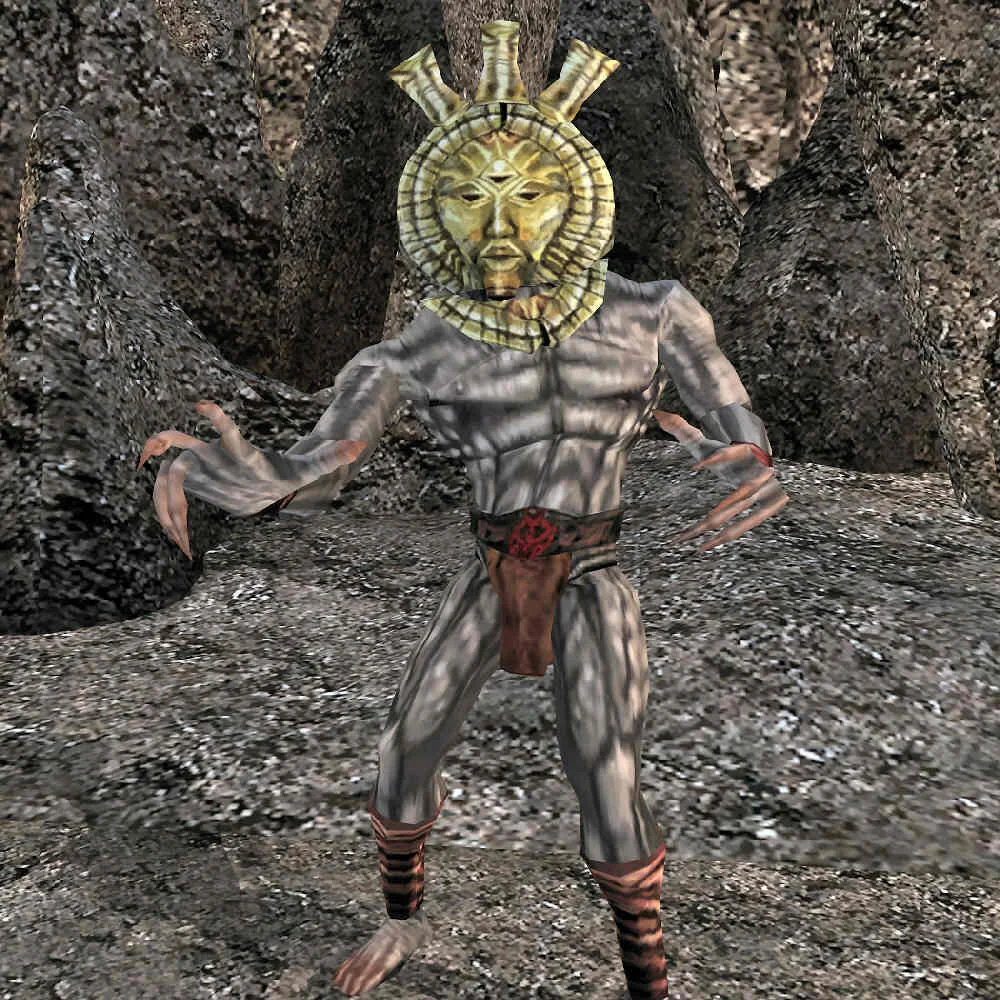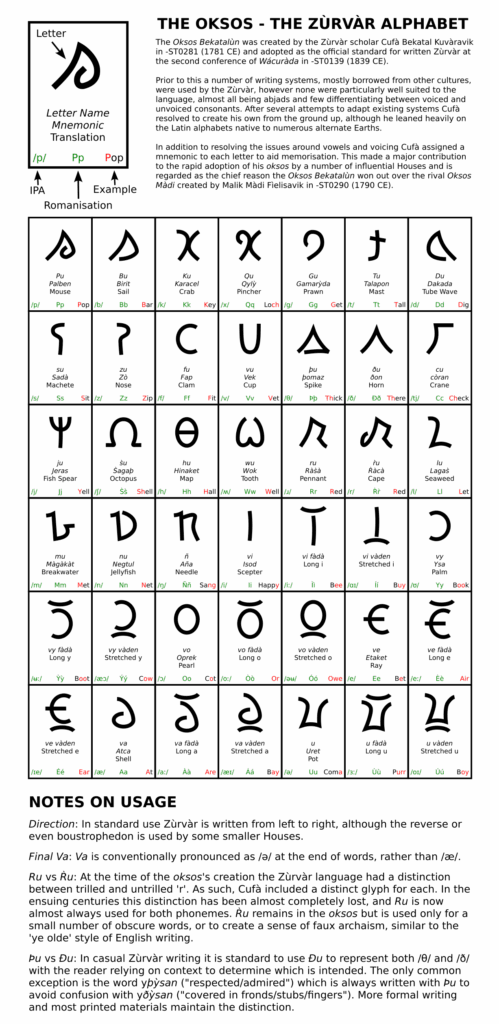The Oksos – The Zùrvàr Alphabet
The Oksos Bekatalùn was created by the Zùrvàr scholar Cufà Bekatal Kuvàravik in -ST0281 (1781 CE) and adopted as the official standard for written Zùrvàr at the second conference of Wácuràda in -ST0139 (1839 CE).
Prior to this a number of writing systems, mostly borrowed from other cultures, were used by the Zùrvàr, however none were particularly well suited to the language, almost all being abjads and few differentiating between voiced and unvoiced consonants. After several attempts to adapt existing systems Cufà resolved to create his own from the ground up, although he leaned heavily on the Latin alphabets native to numerous alternate Earths.
In addition to resolving the issues around vowels and voicing Cufà assigned a mnemonic to each letter to aid memorisation. This made a major contribution to the rapid adoption of his oksos by a number of influential Houses and is regarded as the chief reason the Oksos Bekatalùn won out over the rival Oksos Màdi created by Malik Màdi Fìelisavik in -ST0290 (1790 CE).
Notes on Usage
Direction: In standard use Zùrvàr is written from left to right, although the reverse or even boustrophedon is used by some smaller Houses.
Final Va: Va is conventionally pronounced as /ə/ at the end of words, rather than /æ/.
Ru vs Ŕu: At the time of the oksos‘s creation the Zùrvàr language had a distinction between trilled and untrilled ‘r’. As such, Cufà included a distinct glyph for each. In the ensuing centuries this distinction has been almost completely lost, and Ru is now almost always used for both phonemes. Ŕu remains in the oksos but is used only for a small number of obscure words, or to create a sense of faux archaism, similar to the ‘ye olde’ style of English writing.
Þu vs Ðu: In casual Zùrvàr writing it is standard to use Ðu to represent both /θ/ and /ð/ with the reader relying on context to determine which is intended. The only common exception is the word yþỳsan (“respected/admired”) which is always written with Þu to avoid confusion with yðỳsan (“covered in fronds/stubs/fingers”). More formal writing and most printed materials maintain the distinction.

















